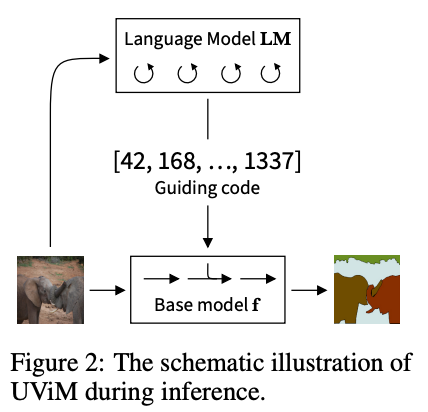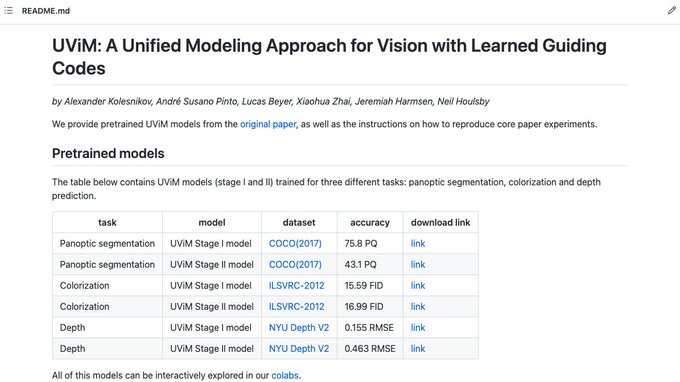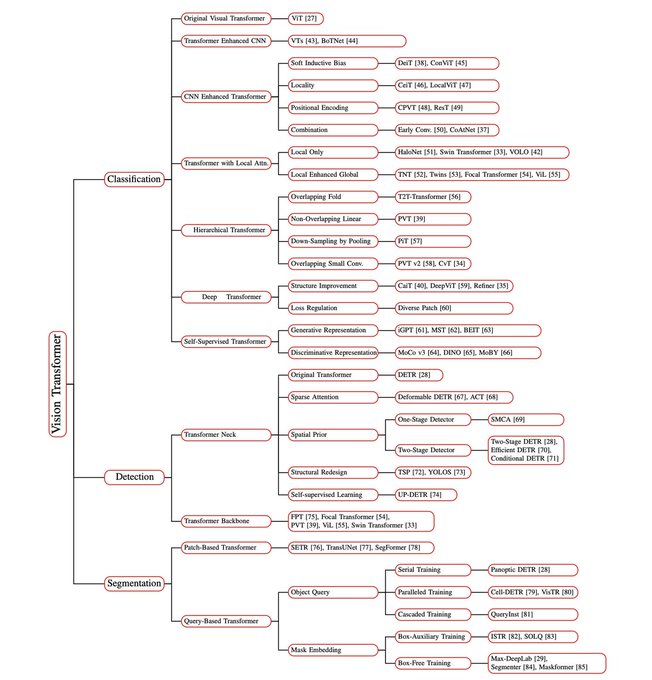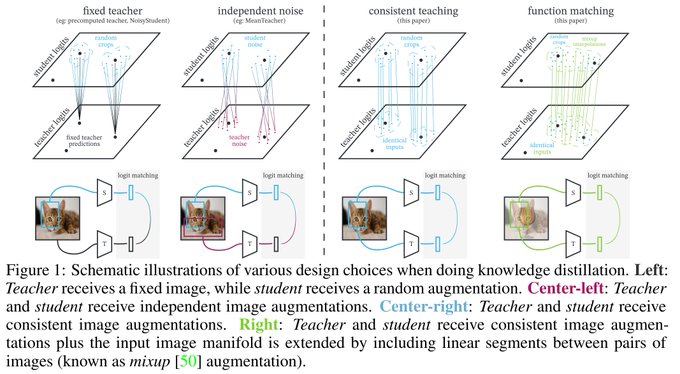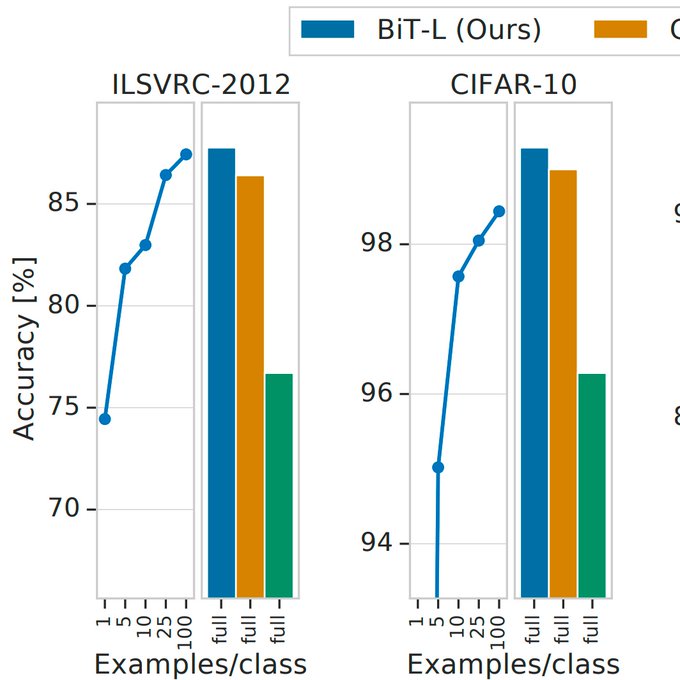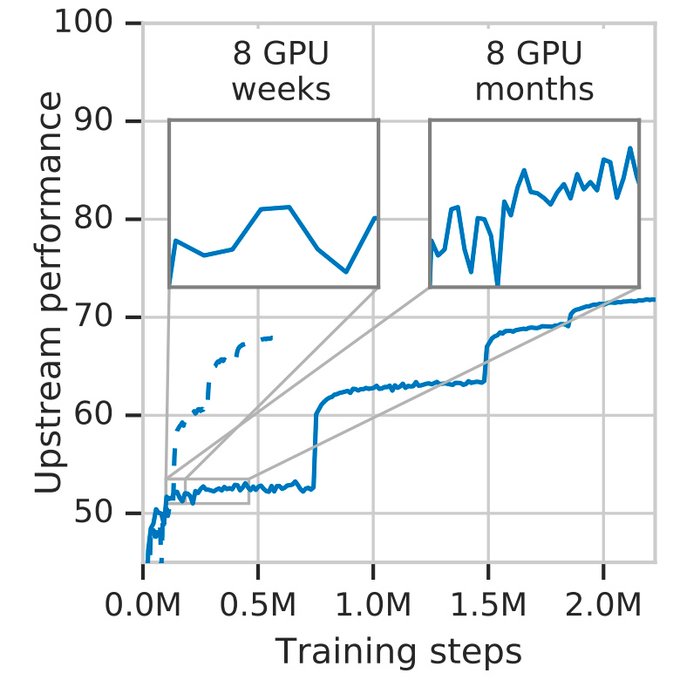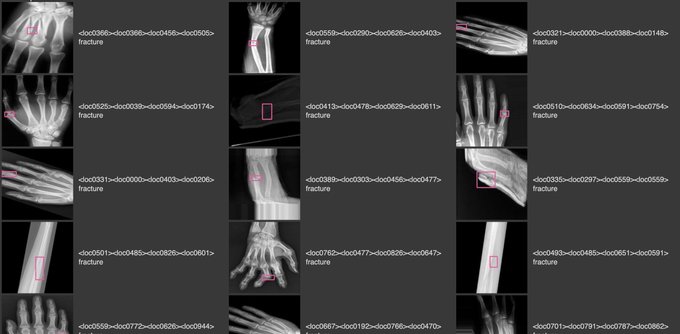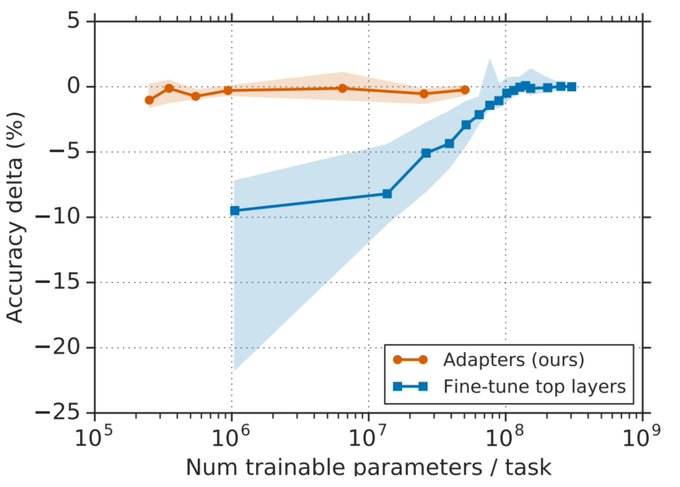
Alexander Kolesnikov
@__kolesnikov__
Followers
4,838
Following
175
Media
29
Statuses
380
Staff Research Scientist at @googledeepmind , Zürich. I like making things simpler. Co-creator of BiT, ViT, MLP-Mixer, UViM, SigLIP, Paligemma.
Zurich
Joined January 2019
Don't wanna be here?
Send us removal request.
Explore trending content on Musk Viewer
Cheney
• 362216 Tweets
Eagles
• 228072 Tweets
Packers
• 131884 Tweets
ENGFA ACTRESS 100M
• 102564 Tweets
श्री गणेश
• 101074 Tweets
Ganesh Chaturthi
• 87524 Tweets
Ganesh Chaturthi
• 87524 Tweets
#ATIPASHOPxCHARLOTTESNACK
• 82202 Tweets
Saquon
• 74596 Tweets
Perú
• 73840 Tweets
गणपति बप्पा
• 73341 Tweets
Jalen
• 57356 Tweets
Green Bay
• 37672 Tweets
भगवान गणेश
• 35959 Tweets
#キントレ
• 32975 Tweets
Jordan Love
• 30718 Tweets
#二度と撮れない画像を貼れ
• 27534 Tweets
Duke
• 25916 Tweets
#GanpatiBappaMorya
• 25546 Tweets
श्री सचिन पायलट
• 20349 Tweets
Lucho
• 14854 Tweets
#音泉祭り
• 14253 Tweets
ビッグラン
• 14188 Tweets
Jayden Reed
• 13860 Tweets
Party Love AndaLookkaew
• 13740 Tweets
JustinOn NCAA100Kickoff
• 13304 Tweets
イコラブ
• 12510 Tweets
#2024TRUSTY_IN_BANGKOK
• 10360 Tweets
Last Seen Profiles
Also an interesting survey on MLP-Mixer and concurrent/follow-up research:
Crazy all of it happened in ~6 months only.
1
47
199
Our PaliGemma technical report is finally out: .
We share many insights that we learned while cooking the PaliGemma-3B model. Both about pretraining and transfer.
3
30
168
Concurrent Mixer-like model, but applied to NLP and with fixed token-mixing MLPs with Fourier features. When writing Mixer paper we looked at our learned params and
@tolstikhini
had an immediate reaction: "looks like Fourier" and then we thought of doing exactly same thing later.
1
23
119
Plot twist: the model uses a LM pretrained on the whole internet, and, in particular, it read and memorized our paper showing CIFAR10 test annotation mistakes. As a result, it got to 100% on a noisy test set.
3
10
97
We had a similar observation when doing preliminary investigations for . Vanilla REINFORCE with 2 samples (one for baseline, the other for the update) is good enough to steer vision models in the right direction.
PPO has been cemented as the defacto RL algorithm for RLHF.
But… is this reputation + complexity merited?🤔
Our new work revisits PPO from first principles🔎
📜
w
@chriscremer_
@mgalle
@mziizm
@KreutzerJulia
Olivier Pietquin
@ahmetustun89
@sarahookr
13
100
483
2
15
97
And now we fell victims ourselves: the absolutely great DALLE 2 paper does not cite ViT paper🥲.
@giffmana
On this topic, its funny how some things are too well known to cite (they are just part of common language, and often lower-cased), but not others. Adam really hit a sweet spot, being nearly ubiquitous and cited in most usages. My guess is its partialy in the name.
1
0
19
4
5
91
@karpathy
number of iterations is not enough when there is a batch dimension of some sort. For example, in vision the "number of images seen" is by far the best proxy for measuring training duration in the large-scale regime.
3
2
88
@sherjilozair
@evgeniyzhe
can be quite good. T5 paper uses such learning rate: . And I often use it, eg here we even have a section (3.5) about it.
3
4
65
PaliGemma VLM was pre-trained with segmentation tasks and has the ability to produce dense masks. This capability needs some extra complexity related to (de)tokenization of segmentation masks and we have not documented it well yet.
But
@skalskip92
has it all figured out 👇
I finally managed to fine-tune PaliGemma on the custom segmentation dataset
most of you have probably noticed that I've been spamming all sorts of PaliGemma tutorials for the past few weeks; I have one more
shoutout to
@__kolesnikov__
for all the help!
↓ read more + code
10
51
288
0
9
51
@FrancescoLocat8
@giffmana
ArXiv's 1-3 days publication cycle is too slow given the current research pace. Publishing in-flight overleaf projects is the future.
3
2
50
Checkout our paper for more: .
The code will be made available at , stay tuned.
This is the joint work with André Susano Pinto,
@giffmana
,
@XiaohuaZhai
,
@JeremiahHarmsen
and
@neilhoulsby
.
0
4
42
Incredible to see people already doing useful stuff with PaliGemma by finetuning it on custom data. Great progress,
@skalskip92
@__kolesnikov__
Awesome! After a bit of trial and error, I managed to fine-tune the model using a custom object detection dataset. The Google Colab works great.
I have one more problem. How can I save a fine-tuned model? Really sorry if that's a stupid question, but I'm new to JAX and FLUX.
3
3
16
0
7
40
Are we still making meaningful progress on ImageNet? What happens if we carefully re-annotate ImageNet val set? How to improve ResNet-50 top-1 accuracy by 2.5% by cleaning training data and using different loss function? See our new paper for the answers: .
Are we done with ImageNet? That's what we set out to answer in with
@olivierhenaff
@__kolesnikov__
@XiaohuaZhai
@avdnoord
. Answer: it's complicated. On the way, we find a simple technique for +2.5% on ImageNet.
2
33
95
2
11
40
and after 7 years I can still tell in 0.1 seconds that it is pixelcnn++ samples
0
0
39
Thank you
@ISTAustria
and
@hetzer_martin
for the award, I am deeply honored to receive it. And thank you to
@thegruel
for being the exceptionally great and supportive PhD supervisor.
@__kolesnikov__
receives the
@istaustria
Alumni Award 2023! “This recognition holds special significance for me, as ISTA has played a pivotal role in shaping me as a scientist”. Congratulations and we are excited to see what comes next for you.
2
1
10
4
3
36
Finally, a Google AI Blog post about BiT, our state-of-the-art visual model. And to show that we are serious, we release code in three deep learning frameworks: TF2, PyTorch and Jax. Check it out:
0
11
35
At ICCV and curious about semi-supervised learning with self-supervision? Come to our talk today at 15:20 in Hall D1 or chat with us at poster
#20
from 15:30 to 18:00. , Code: . Joint work with
@XiaohuaZhai
@avitaloliver
and
@giffmana
0
15
35
It turns out that distillation yields wildly different results depending on subtle choices. But if done right, works consistently great for model compression, i.e. results in ~83% ImgNet with R50. What does "right" mean? Check out or a 🧵 from
@giffmana
👇
So you think you know distillation; it's easy, right?
We thought so too with
@XiaohuaZhai
@__kolesnikov__
@_arohan_
and the amazing
@royaleerieme
and Larisa Markeeva.
Until we didn't. But now we do again. Hop on for a ride (+the best ever ResNet50?)
🧵👇
8
128
654
0
8
35
Check out a thread on our recent image-text project from
@giffmana
.
My personal tl;dr: when learning a joint embedding space for image-text (e.g. CLIP-style), you are much better off by *freezing* an image embedding that was pre-trained on the standard image data like ImageNet.
2
10
33
That is an appealing perspective on ViT and Mixer. Nevertheless, I think it really misses the point. There is a lot to unpack here, so let's do a thread(🧵).
@ykilcher
@GoogleAI
@neilhoulsby
@giffmana
@__kolesnikov__
This only really works when you have access to JTF300M and google money/compute. As EfficientNetV2 showed, if you have constraints (eg training efficiency - Fig 1; model size, FLOPs, and inference latency - Fig 5) use the EfficientNetV2 network instead of a "crap architecture".
1
0
9
2
7
33
This is a nice idea and also a perfect excuse to advertise my quite old paper, where we propose almost exactly the same: a method to categorise class maps into "objects" or "distractors" with virtually zero human supervision (few clicks per class):
📢 We now release "Salient ImageNet", a dataset with "core" and "spurious" masks for entire ImageNet!
Website:
with
@sahilsingla47
,
@MLMazda
Such a richly annotated dataset can be useful for model debugging, generalization, interpretation, etc. 1/n
3
25
109
0
6
32
Waiting for timm to follow the trend ;)
🔥JAX meets Transformers🔥
@GoogleAI
's JAX/Flax library can now be used as Transformers' backbone ML library.
JAX/Flax makes distributed training on TPU effortless and highly efficient!
👉 Google Colab:
👉 Runtime evaluation:
3
113
532
1
2
31
Training models at scale beyond ImageNet is challenging. We devise a recipe for learning visual representations from >100M images. Beside "obligatory" SOTA on ImageNet/CIFAR, we get great results in the low data regime transfer with a single hyper-param!
0
8
31
@karpathy
The question is partially addressed here (as a by-product of studying the effect of the batch size): . For example for ImageNet they show that until the batch size becomes huge, the number of images seen is the only thing that matters:
1
1
30
Happy to see that my past "Imagenet SOTA" academic exercises turned out to be beneficial for real and useful vision applications. Deep down I was not sure it will ever be the case.
New paper from our team
@GoogleHealth
/
@GoogleAI
() Pre-training at scale improves AI accuracy, generalisation + fairness in many medical imaging tasks: Chest X-Ray, Dermatology & Mammography! Led by
@_basilM
,
@JanFreyberg
, Aaron Loh,
@neilhoulsby
,
@vivnat
1
20
97
0
2
26
PaliGemma being used as intended 👇
I fine-tuned my first vision-language model
PaliGemma is an open-source VLM released by
@GoogleAI
last week. I fine-tuned it to detect bone fractures in X-ray images.
thanks to
@mervenoyann
and
@__kolesnikov__
for all the help!
↓ read more
30
196
1K
2
2
23
Nice PaliGemma tutorial, enjoyed watching it.
A comment regarding your struggles with getting good mAP for detecting multiple objects: it is a known limitation of all log-likelihood generative models and we wrote a whole paper on how to address it: .
2
2
24
It was indeed a great year (in science at least), thanks to all amazing collaborators who made this happen
@giffmana
@XiaohuaZhai
@joapuipe
@JessicaYung17
@sylvain_gelly
@neilhoulsby
Alexey Dosovitskiy
@dirkweissenborn
@TomUnterthiner
@m__dehghani
@MJLM3
Georg Heigold
@kyosu
.
I always see people humble-brag on twitter. What happens if I just plain shameless-brag? Will a black hole appear under my feet? Let's find out! Two of my papers with code (BiT + ViT) are in top10 of 2020, yay! Let's keep up that trajectory
@__kolesnikov__
@XiaohuaZhai
etal. :)
2
4
67
0
1
20
We have released very strong image-text contrastive models from the SigLIP paper . Check out this colab: .
0
1
16
This is the joint work with
@ASusanoPinto
,
@YugeTen
,
@giffmana
and
@XiaohuaZhai
, done at
@GoogleAI
, Brain Team Zurich.
2
0
14
A novel interpretation of VAE as non-linear PCA.
We looked into visual disentanglement mathematically. Turns out the canonical (beta-)VAE (by accident) does what one would want from deep PCA! Accepted to
#cvpr2019
.
#deepPCAexists
5
108
435
0
2
15
@yoavgo
GroupNorm works equally well in Vision and it does not depend on the batch dimension. I doubt this explanation is correct
1
0
15
Work done with
@tolstikhini
,
@neilhoulsby
,
@giffmana
,
@XiaohuaZhai
,
@TomUnterthiner
,
@JessicaYung17
,
@keysers
,
@kyosu
,
@MarioLucic_
, Alexey Dosovitskiy. And special thanks to Andreas Steiner for outstanding support with opensourcing.
1
1
12
SigLIP in timm 🎉
Thanks
@wightmanr
!
Don't forget to update your timm version to latest (0.9.8+)! The SigLIP support is via timm backbone and can be loaded in both timm and OpenCLIP from same
@huggingface
hub models.
0
0
6
1
1
13
There are likely some rough edges in the revamped code that we will improve over time. Glad to see big_vision is recognised by the leading OSS engineers: . Gives us additional motivation to keep big_vision up-to-date with the latest advances.
1
2
11
Impressive demonstration of how to successfully adapt the BERT model for solving custom NLP tasks by tuning a small amount of parameters.
It turns out that only a few parameters need to be trained to fine-tune huge text transformer models. Our latest paper is on arXiv; work
@GoogleAI
Zürich and Kirkland.
#GoogleZurich
#GoogleKirkland
0
43
121
0
3
10
Self-supervision is effective for semi-supervised learning. Check out our work () with
@XiaohuaZhai
,
@avitaloliver
and
@giffmana
for details.
Want to turn your self-supervised method into a semi-supervised learning technique? Check out our S⁴L framework ()!
Work done at
@GoogleAI
with
@avitaloliver
,
@__kolesnikov__
and
@giffmana
.
2
35
117
0
4
11
All powered by the genius jax.Array and jax.jit API, which was recently revised to support global sharded computations. Shout-out to jax developers for doing such great work
@yashk2810
@jakevdp
@froystig
@SingularMattrix
(and more, but it is everyone I found on X).
1
1
11
@skalskip92
You can use for this:
import big_vision.utils as bv_utils
flat, _ = bv_utils.tree_flatten_with_names(flat)
with open("ckpt.npz", "wb") as f:
np.savez(f, **{k: v for k, v in flat})
And then load:
bv_utils.load_checkpoint_np("ckpt.npz")
2
1
10
big_vision is a joint work with
@giffmana
,
@XiaohuaZhai
and myself, with many great contributions from Brain team members. Special shout-out to
@AndreasPSteiner
for making a great optax-based optimizer library for big_vision.
0
0
9
This code upgrade was done together with my
@GoogleDeepMind
colleagues
@giffmana
@ASusanoPinto
@AndreasPSteiner
@XiaohuaZhai
.
1
0
9
@stanislavfort
@sarahookr
shameless plug: my colleague
@ibomohsin
have also extended scaling laws further to infer model's optimal shape (width, depth, etc): . We use these laws routinely.
1
0
9
@norpadon
This paper also prescribes how it can be done in a principled way: . And it has many more gems.
1
1
8
@giffmana
Exponential spike in space garbage that will prevent or hinder space exploration is a real scenario:
1
0
8
@roydanroy
@askerlee
this was a joke, though I would not rule out that a well-done hybrid of a LLM and an image recognition model will do this, when prompted appropriately.
3
0
8
@skalskip92
Yes! The prefix (aka prompt) looks like this:
detect: red car ; cat ; yellow bus
The corresponding suffix (aka output) is
<loc0072><loc0003><loc0905><loc1019> red car ; <loc0272><loc0140><loc0821><loc0851> cat ; <loc0378><loc0003><loc0424><loc0069> yellow bus
3
1
8
It turns out that massively scaling up model size and training data results in a drastic jump of image classification accuracy in a challenging real-life setup. See our updated paper for details and additional surprising results that include low-data eval:
0
0
8
Check out our tensorflow2 tutorial: fine-tuning recent state-of-the-art BiT visual models () without pain (and BatchNorm!) on your data of choice.
0
1
6
@skalskip92
We generally encourage to use tensorstore in big_vision, see `tssave` and `tsload` functions in big_vision , as it scales much better for really big checkpoints. That is why numpy utils are not very prominent, but numpy should be good enough for paligemma.
1
0
6
@karpathy
In my personal experience, I was able to scale batch size even further without taking any losses. That said, at some point this nice relation seems to break and for ImageNet-like tasks it seems to hold the best.
0
0
6






















